Australia is the 13th largest economy in the world and it is among the largest 21 exporters and importers in the world. Australia´s GDP in current prices in 2017 was USD 1.7 trillion, whereas the GDP (PPP) was USD 1.3 trillion. 2018 was Australia’s 27th consecutive year of economic growth, which is quite an achievement.
Australia has a population of 25 million people, with very high per capita income, of USD 39.000 (PPP) and USD 49.100 (current prices). These numbers show that Australia is at the same time an important economy in the world with an exceptional level of economic wellbeing. The inflation rate is 1.9% (August 2018), and the unemployment rate is 5.3%. (August 2018)
The Australian economy has benefitted over the last decade from increasing exports (volume and price) of minerals and energy, derived, especially, from the expanding demand of China India and Japan. In 2017, Australia exported AUD 386 billion in goods and services and imported AUD 293 billion.
The Australian dollar has been kept below the US dollar for the past 4 years as a way to promote exports, and with a low interest rate since August 2016 of 1.5%. Another of the more complex issues of the Australian economy is fiscal deficit incurred with the goal of stimulating the economy during the latest global crisis, 10 years ago. It is expected that Australia will reach fiscal balance in the 2019/2020 fiscal year.
The Australian investment level keeps high at a 35% of the GDP. Australia is a large recipient of Foreign Direct Investment and at the same time is an important investor in the world. The FDI stock in Australia was USD 510 billion in 2010, while the Australian investment stock in the world was USD 402 billion. The FDI flow in 2017 was AUD 849 billion, making it the 13th largest recipient, and 3.2% of flows worldwide. Australian investments flow to the world was AUD 590.6 billion, 17th highest in the world, and 0.3% of global flows. The principal sources of investment are United States, Great Britain, China, Japan, Singapore, Germany, Belgium, France and Italy, among others.
The main sectors of Australian investment are manufacturing, financial services, mining, intellectual property services, and communication and transport services.
Among the main exports it is worth mentioning: coal, iron ore, education services, gold, tourism, crude oil, natural gas, aluminum, copper, alumina, beef, medicines, wheat, financial services and professional services. The main imports are: Tourism, passenger vehicles, crude and refined oil, freight transport services, medicines, gold, telecom equipment, computers, passenger transport services, financial services, intellectual property services, pumps (excluded for liquid) and parts, and TV monitors. The main destinations for the Australian exports are: China, Japan, India, Rep. of Korea, USA, UK, New Zealand, Singapore and Thailand. Over 60% of the exports go to APEC member states.

